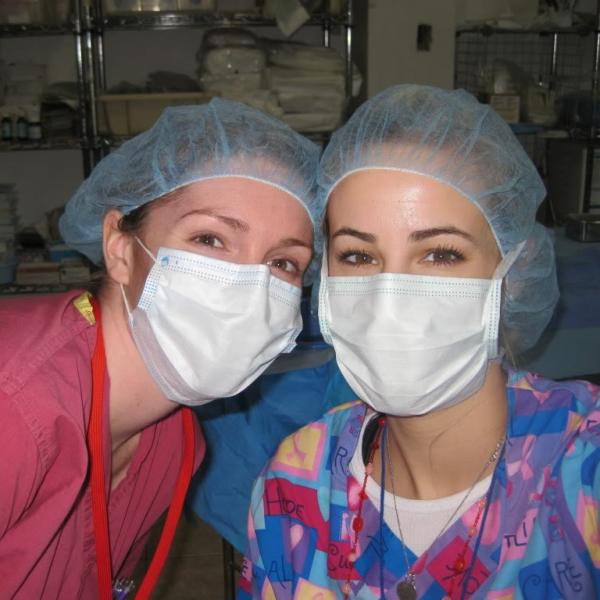I’m currently in my 7th year at Vanderbilt University, serving medical students as part of InterVarsity’s Graduate & Faculty Ministries. Over time, we developed a schedule that complemented the medical students’ first two years of classes, third year of intense hospital and clinic rotations, and fourth year of rotations, research and residency interviews. Then Vanderbilt’s School of Medicine decided to develop a new curriculum (abandoning the old curriculum which resulted in the highest medical board test scores in the country) – it was time for a change. The new curriculum (called Curriculum 2.0) will drastically change the medical school experience for students, faculty, and for our ministry. In addition to the medical students’ new schedule, our ministry includes nurse practitioner students in programs which range from one to three years. Each of these programs has a unique schedule.
Ministry 2.0
Ministry with healthcare students can seem like a constantly-moving target. But perhaps all student ministries are like this in one way or another! Under the old schedule, our ministry relied on the second year medical students who were busy, but had also come through year one of medical school, felt comfortable with their work load, and in a sense had “figured it out.” In Curriculum 2.0, most second year students will be too busy to be intimately involved with the ministry, particularly in a leadership capacity. We also went through a year-long period where two classes were doing their most intense rotations (called the bulge), so essentially half the medical school was working in the hospital at one time! We are through the bulge now, and are working through what it looks like to engage third year students who have more flexible schedules and far more time on their hands.
First year, second year, third year, all this sounds like a mess and you may be wondering, “Why should I care?” Good question! We all work in different yet challenging contexts; ministry is never easy. As undergraduate staff, you may be thinking, "What a breeze! At least your students have a common field of study and you're looking at well-defined schedules, compared to an undergraduate fellowship diverse with students in different years of study, in innumerable majors, and the idiosyncrasies of all of their different schedules! Engineering students before and after the weed-out, architecture students spending countless late nights drafting, English and philosophy majors required to do unbelievable volumes of reading and the writing that follows, business students leaving campus for internships, study abroad experiences being required by more programs, science majors with both heavy course loads and lab requirements,... need I continue?
You may not work with medical and nursing students like I do, but we do all work on campuses that are continually changing. Think about it: Are your students the same as the students you knew five, ten, fifteen years ago? Is your campus the same? Do your students attend the same churches as they did in the past or is there a new church that your students love to attend? Are the pressures facing your students the same? Is their debt load the same? Is your group’s personality the same? What else has changed? The list could go on and on, but there's one constant answer: things change!
Assess the Context of Your Ministry
As a result we need to constantly assess our contexts to make sure we are meeting the needs of the students to grow in their faith. Most professional school ministries turn over so fast that each year feels completely different than the year before. In our context at Vanderbilt, we also had to deal with a completely new curriculum with an entirely new schedule, which means, whether we like it or not, our ministry must make significant changes. Whether the changes in your context are big or small they will affect your ministry.
Assess the Structures of Your Ministry
We must also continually assess the structures we have in place to make sure they will best serve our ever-changing campuses. We need to avoid thinking that just because something worked in the past it will work again. At Vanderbilt, this meant combining our Nurses’ Bible Study, Men’s Bible Study, and Women’s Bible Study into one weekly meeting which includes dinner and Bible study.We realized that more regular interaction between students in all programs and all years was needed to develop a deeper sense of community. We needed to increase continuity from year to year. We also needed a structure that had a lower threshold for students who could not attend every week. The threshold for small groups was probably a little too high for students who were not able to attend as regularly as they would like. All this is still subject to change. But that is the point, what will work best in our context?
I encourage each of you to think about your context and try to discern the changes that are occurring where you serve while also considering the structure of your ministry.
- Does your ministry structure meet the needs of your students?
- What has changed within your context?
- What – or who - is missing?
- What are your core values?
- What will help you best live out those values where you are?
We can ask many more questions but the message remains the same: we must know our ever-changing contexts and be willing to modify our structures in order to best serve as a “redeeming influence among the university’s people, ideas and structures.”
Image credit to: Alex Harries on flickr and DShriver_Photos on Photostream